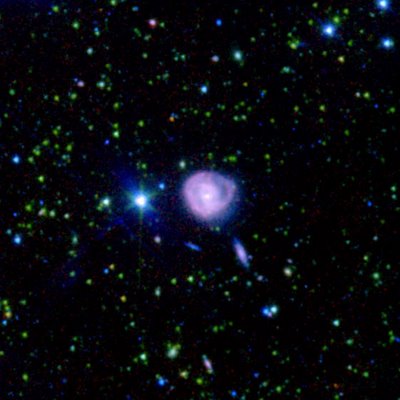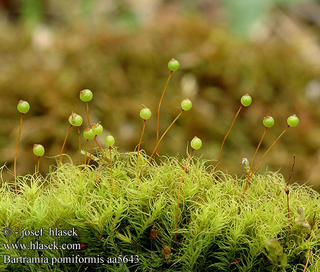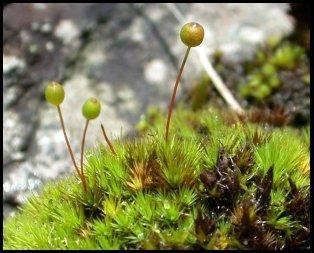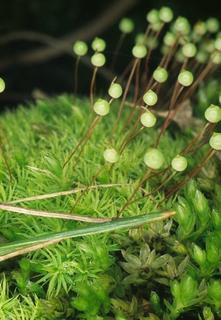Some useful materials for MT trainees and for those who wish to test their knowledge. The first is part of a quiz given to our 4th week MT(I) students
Scroll to the bottom for instructions on how to get more info
A Quick Quiz on the Eyes, Ears and Skin
1 The outer (external) ear is also called the __________.
a) TM
b) otis interna
c) meatum
d) auricle
e) None of the above
2 The skin is made up of the _________, the _______, and the _________.
a) subcutaneous tissue, dermis, epidermis
b) fat cells, corium, endodermis
c) endoderm, epiderm, underderm
d) basal membrane, dermis, hair cells
e) b and d
3 The Optic Chiasm is formed from the ________.
a) retina
b) optic disc
c) uvea
d) medial fibers of the Optic Nerves
e) none of the above
4 The anterior chamber of the eye is ______ to the posterior chamber.
a) posterior
b) inferior
c) superior
d) ventral
e) beneath
5 The two types of sensory cell found in the retina are the_______ and _______.
a) cochlear, proprioceptors
b) rods, retinals
c) cones, retinals
d) macular, foveal

e) none of the above
6 ____________ is secreted by the sebaceous glands.
a) Sweat
b) Sebom
c) Melanin
d) Swebum
e) Sebum
7 Skin is important for ________.
a) making blood cells and maintaining blood pressure
b) mechanical protection, temperature regulation, and preventing fluid loss
c) being the thinnest organ in the human body
d) providing color
e) all of the above
8 The _____ is the outermost anterior structure of the eyeball.
a) cornea
b) conjunctiva
c) iris
d) uvea
e) lens
9 The 2nd (middle) bone of the three ear ossicles is called the ______.
a) stapes
b) tympanus
c) ovial
d) otitis media
e) none of the above
10 The main instrument used to examine the eye is a/an_________.
a) otoscope
b) eytoscope
c) ontoscope
d) lapoltoscope
e) ophthalmoscope
11 Tinnitus is an attack of
a) dizziness.
b) a sensation of spinning or falling.
c) hearing ringing noises not caused by actual sounds.
d) hearing ringing noises that are caused by actual sounds.
e) a type of headache.
12 Progressive loss of hearing with advancing age is also known as
a) presbyopia
b) night deafness
c) vitamin F deficiency
d) prebycusis
e) otitis externa
13 Progressive loss of accommodation in the eyes with increasing age is known as ________.
a) presbyopia
b) night blindness
c) vitamin A deficiency
d) prebycusis
e) ophthalmia externa
14 The canal linking the middle ear to the oropharynx is called the _______.
a) estachian tube
b) ustachean tube
c) eustachean tube
d) eustachian tube
e) nasolacrimal duct
15 A condition in which one is able to focus on far away objects but not on those nearby is ________.
a) presbycusis
b) myopia
c) hypoopia
d) hyperopia
e) LASIK
16 A pustule is ________.
a) a vesicle filled with clear fluid
b) the same as a bulla
c) identical with a wheal
d) resembles a macula
e) none of the above
17 While hiking the patient fell into poison ivy. The patient presents to the ER with ________.
a) erythematous wheals and urticaria.
b) seborrheic dermatitis.
c) narcolepsy.
d) contagious dermatitis.
e) none of the above.
18 In second degree burns we expect to find ________.
a) loss of sensation
b) bruising
c) blisters and pain
d) only erythema
e) none of the above
19 The color of the skin is determined mainly by the amount of ______ present.
a) melatonin
b) melanin
c) sebum
d) collagen
e) lipocytes
20 The organ(s) responsible for our sense of balance is (are) the ______.
a) utricle and saccule
b) organ of Corti and cerebellum
c) vestibule
d) malleus and 6th cranial nerve
e) semicircular ducts
21 What is vertigo?
a) A ringing sound in the ears.
b) An object that floats in front of the eye.
c) A feeling of dizziness.
d) A large coiled structure in the inner ear.
e) None of the above.
22 Dysplastic nevi are
a) always completely harmless.
b) possibly precancerous.
c) another name for acne vulgaris.
d) a type of comedo.
e) none of the above.
23 Keratin is a protein type that is
a) mainly found in bones and ligaments.
b) mainly found in hair and nails.
c) the same as collagen.
d) implicated as a carcinogen.
e) none of the above.
24 Vitrectomy is
a) the removal and/or replacement of the iris.
b) the removal and/or replacement of the humor from the eye.
c) a laser treatment for myopia.
d) another term for enucleation.
e) none of the above.
25 An inability to focus on distant objects while being able to see things that are close by is called __________.
a) presbyopia
b) hyperopia
c) myopia
d) lensitis
e) conjunctivitis
26 Which statement is most likely to be correct?
a) The earliest indicator that the patient was cyanotic was her blue paranychium.
b) The earliest indicator that the patient was cyanotic was her having the blues.
c) The earliest indicators that the patient was cyanotic were her blue nailbeds.
d) The earliest indicators that the patient was cyanotic were her blue eyes.
e) None of the above.
27 The part of the retina, responsible for the sharpest vision is the ________.
a) fovea centralis
b) optic disc
c) rods
d) iris
e) pupil
28 Funduscopy is done to examine the ________.
a) tympanic membrane
b) retina
c) iris
d) aqueous humor
e) lens
29 The specialist responsible for measuring visual acuity and prescribing and fitting corrective glasses is called an __________.
a) ophthalmologist
b) otologist
c) optometrist
d) ophthalmic surgeon
e) ENT surgeon
30 What is the combining form for the eardrum?
a) miring/o
b) staped/o
c) auricul/o
d) myring/o
e) hearing/o
CLUES FOR A CROSSWORD COVERING ENDOCRINOLOGY & MALE AND FEMALE REPRODUCTIVE SYSTEMS (with a few odds and ends thrown in) from our current MT(II) course: The solutions may be whole words, prefixes, suffixes, or abbreviations...
6 Without I, I can swell up under the mental and in front of the pharynx.
6 Capping the producers of urine, my _______ manufactures corticosteroids.
6 I am muscular enough to deliver.
7 Nipple.
3 I am the earliest indicator of becoming hypothyroid.
5 easy to confuse with cutting out, I'm serious about cutting in.
7 Difficulty breathing?
5 Roughly round and smoothly muscled, we ring things...
7 Those female gonads.
2 With the CBC, you need to test me after placental abruption.
8 I come along to cool things off when the going gets hot.
5 I can mean chills or stiffness.
8 Just some of those things that need to be absorbed for life.
5 When P 0 or G 0, I am prefixed.
3 Inserted when the opposite of yes doesn't work.
5 Lips.
3 If I spike on time, the 'Next' ovum is on its way.
3 Work on me to succeed as an MT.
7 Covering the glans.
9 I control the BMR.
5 Trouble in the flow makes my sound but pronounce me Frenchishly.
2 What about the mouth - it is patent.
13 I pop out after T3 and T4 get too high.
3-3 Sometimes inevitable when the cancer spreads (F).
4 Is that perchance a chancre? Better test the ____.
3 I should be smeared at each regular Gyno checkup.
3 another name for the rectouterine pouch and an important part of the DRE, the last three of the three 3-2-3.
5 A fine, prefixial way of saying 'to go backwards'.
2 The female equivalent of ICSH.
9 you need me to keep breastfeeding that babe.
3 One way to avoid holey bones.
2 One word that can save ten months with hard labor.
5 It's oligo___ if I don't usually number over 20 million in an mL.
11 Let's do the medullary 'fight or flight' (my other name begins with 'A'.
3 Easy to mix up with Upper Respiratory Infection, I infect the urinary tract.
6 What we can do to the vas and fallopians to render them unoperational.
5 The pro-lifers hate this word.
6 The first part of GU.
3 Tie me off or cut me out to stop all of the 20 million/ml from getting through.
7 We are of the flesh, less common but more dangerously malignant.
10 I'm the boss of the hormone producers.
3 'I may be benign but I can cause urinary retention in older men.
7 Don't block me, I may need to TURP you.
3 Makes life miserable for some ladies just before the onset of menorrhea.
3 The doctor instructed "Don't feed by mouth", so we went parenteral neither deglutition nor mastication are allowed!
3 bilateral, lower ab tenderness with fever - after C&S, the lady was advised antibiotics .
3 A card test that may indicate STD.
4 I mean to say 'a sac full of fluid'.
11 The cycling inner lining.
6 when the eyes bug out and high on tri-iodo and tetra-iodo hormones, I am called the plural of something to be buried in.
12 A difficult monthly occurrence .
8 Bless my fingers for seeing that those eggs don't escape.
8 When we get less sweet then the alphas need to put out more of me.
9 I was misnamed for my famous discharge while bugging men more than women.
5 combining form for'male'.
10 I'm coiled up and full of male gametes .
3 If you have forgotten me, the DOB may be wrong - time for an astro connsult!
6,6 They made me change my name after bursting (just coz I lost that egg), in order to persist in secreting a lot of Progerterone and Estrogen.
5 Sum these 5 criteria to assess the newborn; _____ SCORE.
11 I am made along with Estrogen in the female gonads.
4 Hailing from the turkish saddle, I am called one thing in women and another in men. For the latter, without me there is little male hormone.
3 I am the first three of the 3-2-3, a hopefully empty pocket.
7 The first letter is 'O' and when I am late, so is the delivery.
10 My diagnostic ability is very high(ly) sound.
6 Don't get confused, just cut me out.
4 I hate seeing this in my in-box.
7 Underactive 'kidney cap' cortices.
7 The Beta cells sitting in islands inside a major exocrine gland get into action and secrete me when things get too sweet.
4 A group of symptoms that run together, are inappropriate and cause a high BP -usually resulting from a hyper posterior part.
2 The node in between His's bundle and the SA.
6 Jail can result but this is much worse when it is cardiac.
8 I am found in both men and women but men rarely have me cut and stitched up to prevent tearing.
8 I come in two types and three flavours - always sweet, thirsty and fluidly excreting.
6 Stick me at the end.
5 If you are negative, with my serial dilutions, I may predict whether that cesar is needed early.
3 Do me to be minimally invasive (abbreviation).
2 Prefix for everything is OK with the shield shaped gland.
3 combining form for the excretory system in the second part of GU.
8 One can hide, refusing to descend and require fixation (M).
6 I have only 23 and am produced by both males and females.
7 The outer covering of the sac that holds the future.
8 I will be created when they cut that thing that tied that 'soon to be' kid in place - not to mention the feeding for the whole 10 months.
4 Going in backwards to take pictures - what a gall!
3 This scan is supposed to be one step better than those dumb spinning electrons.
3 When my sister lower down gets tensed up, I have to give way and things can go ballistic.
5 Highly Active Anti-Retroviral Therapy (abbreviation).
9 Trouble in the third trimester - the BP is totally out of control.
10 After puberty, the ends kept growing and didn't stop till the growth was resected.
2 Three I as opposed to four I for my more active sister.
6 I tie the myos to the osteos.
9 I am of epithelial origin (a malignantly skinny type) - better take aggressive action early.
5 A very correct and straight prefix.
3 I am bilaterally attached to the womb but sometimes considered just extras and my first three letters are a,d, and n.
4 A messenger from higher-up, I often have to tell the cortex to get into gear.
13 My glands are better than the nosey throat's.
6 For once, the Greeks didn't have the word - I handle the -rrheas and - rrhagias for every period.
4 We do this for benign hyperplasia of a male exocrine gland that is anatomically subcystal (abbreviation).
9 If I twist or hide then you had better do this fixation fast.
3 Primitive protein that is a tumor marker.
7 below the lowest GI orifice.
9 When the light shines through you had better drain me.
3 As necessity demands (abbreviation).
4 The first four letters of a tumor that overproduces catecholamines.
10 Those smooth muscles that labor to deliver.
8 A Dutchman gave his name to these monthly bursting bubbles.
6 The inner lining of the sac that feeds, protects and nourishes.
8 Just one mate (at a time?).
2 All the nutrients enter through my system.
5 Combining form for the major hard structural elements in the body.
3 When I rise above normal it's time to excise that prostate.
A template for the crossword can easily be made in Excel
Contact me through LinkedIn or Twitter if you have any doubts or questions, or post a comment below.














